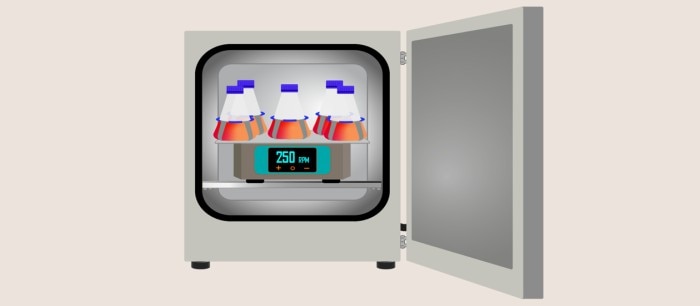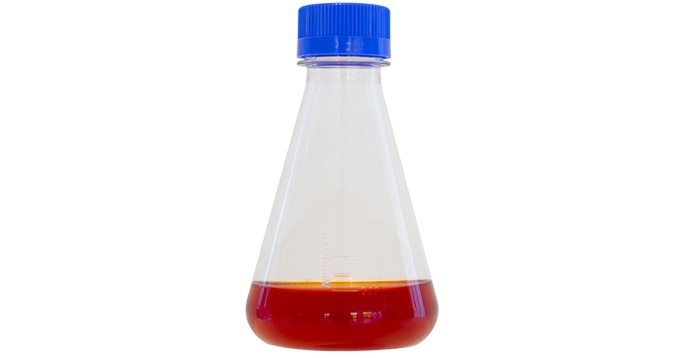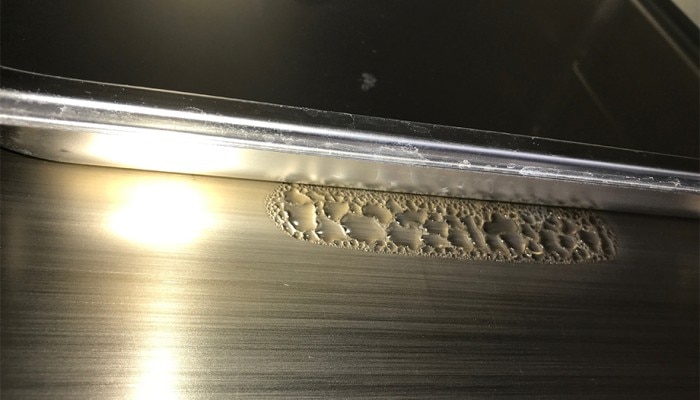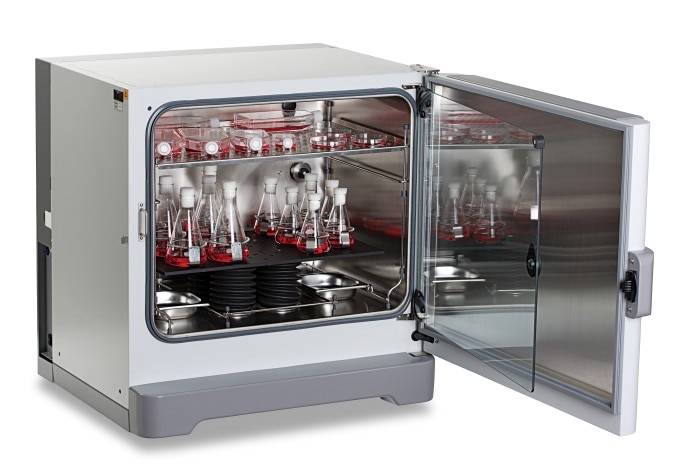MENU
TH | THB
TH | THB
-
- Benchtop Centrifuges
- Floor-Standing Centrifuges
- Refrigerated Centrifuges
- Microcentrifuges
- Multipurpose Centrifuges
- High-Speed Centrifuges
- Ultracentrifuges
- Concentrator
- High-Speed and Ultracentrifuge Consumables
- Centrifuge Tubes
- Centrifuge Plates
- Device Management Software
- Sample and Information Management
You are about to leave this site.
Please be aware that your current cart is not saved yet and cannot be restored on the new site nor when you come back. If you want to save your cart please login in into your account.
No results found
Search Suggestions

Can I put a shaker into a CO2-incubator?
Lab Academy
- Cell Biology
- Cell Culture
- Lab Routine
- Efficiency
- Contamination
- CO2 Incubators
- Mixers & Shakers
- FAQ
In this article, we discuss key considerations before using a shaker in a CO2 incubator for the cultivation of mammalian cells in shake flasks.
This article was published first in "Inside Cell Culture" , the monthly newsletter for cell culture professionals. Find more interesting articles about CO2 incubators on our page "FAQs and material on CO2 incubators" .
Read more
Read less
Contents
Read more
Read less
Introduction - Why putting a shaker into a CO2 incubator?
Mammalian cells in suspension are mainly cultivated in shake flasks to improve aeration and the exchange of nutrients and metabolic waste products in the cell-surrounding medium. These cultures are often used, e.g. for the expression of recombinant proteins or the production of bioreactor starter-cultures (inoculum). To ensure optimized cell growth, the temperature and pH of the medium needs to be controlled. Furthermore, the volume of the medium needs to be maintained to avoid harmful impacts by significant shifts in concentration of metabolites, salts, etc. This is especially critical because shake flask agitation increases medium evaporation. Appropriate growth conditions are provided by a CO2-enriched atmosphere with high relative humidity that requires specialized devices. Two systems are commonly used: a) CO2 resistant shakers that are placed inside a traditional CO2 incubator and b) CO2 incubator with an integrated shaker (Read more about the advantages and disadvantages of both systems and proper selection in our White Paper ).
In this article, we focus on the challenges of putting a shaker into a CO2 incubator.
Read more
Read less

Figure 1: Shake flasks with mammalian cell culture are either cultivated with CO2 resistant shakers inside a traditional CO2 incubator or in CO2 incubators with an integrated shaker/CO2 incubator shaker.
Influence of the shaker on growth conditions
Reliable growth conditions inside the CO2 incubator are crucial to achieve optimal and reproducible cultivation results. In addition to proper CO2- and temperature control, a high relative humidity, the avoidance of vibrations is another factor to consider, especially if simultaneous cultivation of adherent cells in the same device is planned.
The use of a shaker in a CO2incubator introduces additional heat to the chamber environment. As CO2 incubators are thermally insulated and usually lack active cooling, this additional heat may disrupt proper temperature control of the CO2incubator. A warming above physiological temperature of only one degree can make a difference to cell growth1 .
Therefore, it is recommended to use a shaker with low heat dissipation.
Read more
Read less

Figure 2: A shaker inside a CO2 incubator introduces additional heat and is an obstacle for proper airflow inside. Therefore, a detailed look on the shaker´s specifications and testing before use is crucial to avoid significant interference with temperature, airflow and other parameters.
If the CO2 incubator is also used for cultivation of adherent cells, two additional challenges of putting a shaker inside it may occur. As the weight of a shaker can easily exceed the maximum shelf load (usually in the range of 10 kg/22 lbs), shelf bending may occur. Even if this may occur unproblematic at first glance, slight bending leads to a cultivation of vessels at a slope, thus difference of medium above the growth surface. In addition to shelf bending, shaker-induced vibrations can become problematic for parallel cultivation if vibration-sensitive cells like stem or primary cells.
Ideally, shakers should be used that are specialized for a use inside CO2 incubators and the performance should be tested to ensure it doesn´t interfere with temperature control and airflow. If shelf bending or vibrations for adherent cells are a concern, a CO2 incubator with an integrated shaker should be considered.
Ideally, shakers should be used that are specialized for a use inside CO2 incubators and the performance should be tested to ensure it doesn´t interfere with temperature control and airflow. If shelf bending or vibrations for adherent cells are a concern, a CO2 incubator with an integrated shaker should be considered.
Read more
Read less
Shaker impact on contamination prevention
The warm, humid atmosphere inside the CO2 incubator and nutrient-rich media used for mammalian cell cultivation provide ideal growth conditions for contaminants. In addition, cross-contaminating eukaryotic cell lines that can be introduced by earlier or simultaneous projects inside the same device. Regardless of its type, contamination prevention is crucial to avoid additional expenses by loss of sample material, the need to repeat experiments, combatting the contamination itself, and possible downtimes imposed by these measures. In addition to the use of aseptic techniques, it is worth thinking about the cleanability of a shaker as a structural defense, especially given the labor invested in cleaning over it´s lifetime.
Contaminants preferably grow on moist surfaces or in liquids. Therefore, the shaker inside the CO2 incubator should facilitate the detection and fast, thorough removal of medium spills. To ensure the exclusion of moisture inside the shaker, electronics and drive-related mechanical parts should be sealed. In addition, the performance of the shaker inside the CO2 incubator should be tested to ensure it doesn´t lead to an increased contamination risk by condensation.
Read more
Read less

Figure 3: It is recommended to test the performance of the shaker inside the CO2 incubator to ensure it doesn´t lead to an increased contamination risk by condensation.
High-temperature disinfection for several hours has become the gold standard in CO2 incubator disinfection. Thus, ideally also the shaker should be resistant to the temperatures used (120 – 180 °C) to avoid contamination. Even though, parts of the shaker can be autoclaved, there is currently no shaker on the market that is fully resistant to these temperatures. Therefore, it needs to be removed before disinfection of the CO2 incubator. In addition, reinstallation of the shaker poses a high risk of (re)introducing a contamination by the device itself, but mainly by airborne contaminations due to prolonged long door opening during the installation.
If a high degree of contamination prevention is necessary, a CO2 incubator with an integrated shaker and a high temperature disinfection for all internal parts is advisable.
If a high degree of contamination prevention is necessary, a CO2 incubator with an integrated shaker and a high temperature disinfection for all internal parts is advisable.
Read more
Read less
Impact on shaker lifetime
The warm, highly humid (~95 % relative humidity) and slightly acidic atmosphere inside a CO2 incubator is a challenging environment for a shaker, especially regarding corrosion. Therefore, it is advisable to select a specialized shaker with sealed electronics and drive parts that protect the device from the corrosive atmosphere and spills. For added resistance, the exterior should be made of corrosion-resistant materials like stainless steel or specialized plastics like Acrylonitrile butadiene styrene (ABS).
Read more
Read less
Use of a shaker in CO2 incubator – Additional considerations
If you are considering buying a new shaker and/or CO2 incubator for the cultivation of mammalian cells in suspension, there are additional aspects to keep in mind: Capacity/Throughput, device flexibility for various applications, shaker control and initial invest vs. running costs. Read more about these aspects in our White Paper .
Read more
Read less
Summary – Can I put a shaker into a CO2 incubator?
A standard open-air shaker should not be used inside a CO2 incubator for several reasons described above (risk of temperature control and airflow interference, condensation formation, contamination risk, impact on shaker lifetime etc.). Instead, a shaker especially designed for this use or ideally a CO2 incubator with an integrated shaker should be used. Read more about proper selection of a system in our White Paper .
Read more
Read less
References
1. J. Wagener, F. Stöhrer, A. Tacheny 2020 - CO2 Incubator Temperature Control:
What Is the Best Place For Your Cell Culture Vessels?
1. J. Wagener, F. Stöhrer, A. Tacheny 2020 - CO2 Incubator Temperature Control:
What Is the Best Place For Your Cell Culture Vessels?
Read more
Read less

